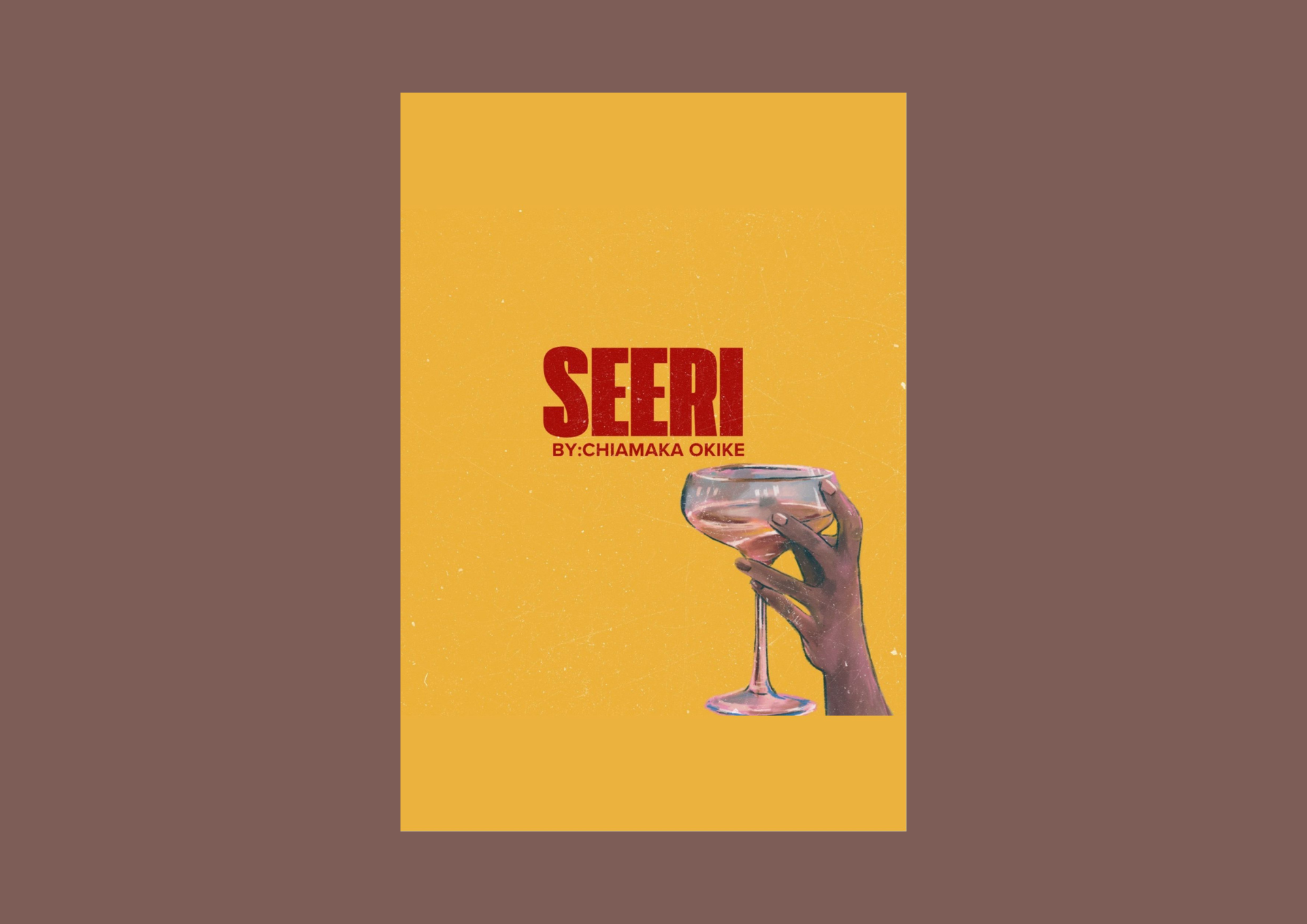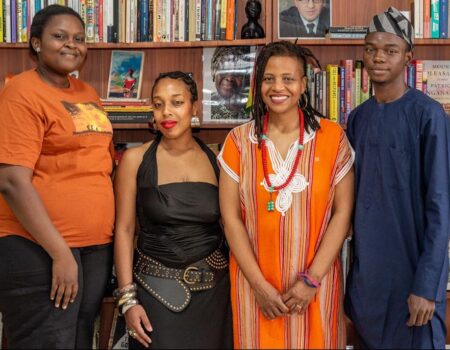spoilers below
“It’s nothing at all that sometimes, when Tajudeen looks at Kewa for long enough, she can still taste the red. And how the flavour coats her life, how all her days with Kewa are drenched in corn syrup and carmine.”
Often when Sapphic love stories are told, they are truncated or cut short by the entanglement of men. Women will fall in love with another woman and disguise it as “fun” and then leave to go back to men when it’s time to get serious. A violent sort of hetero complacency. Chiamaka Okike starves us of this and instead feeds us a love story between two women, in all its sweetness, with grief as her garden for this love.
Seeri (pronounced cher-e) follows Kewa and her best friend Tajudeen on an impromptu night out to win back her boyfriend one year after the death of Kewa’s sister, Nijah. The pair have been friends for a while, Tajudeen turning towards Kewa as a replacement Nijah, and Kewa going mute from the pain of her sister’s death allowing Tajudeen to continue living as if Nijah was alive. But this blossoms into a beautiful friendship.
Flashbacks take us back to moments where romantic feelings first started, and Chiamaka allows readers to buy into their love and see where the seeds first fell. I did think that the flashbacks could have been placed earlier in the novella, because they sometimes shocked me out of the flow of the prose. But nonetheless, nothing in the book is excessive.
Desire is packed into Chiamaka’s scenes. The light touches, the confessions of love that are slipped in here and there. The denial at the beginning that burns away into jealousy, their pro-drug that is eventually fully released as affection. I loved it all. There were moments where I was reading their conversations on the bus and had to fold the book over to laugh. Oh, it feels good to read well written chemistry between two people.
At its core, Seeri is a friends to lovers. It’s about how genuine love can be born from a place of familiarity, safety and security. I personally don’t think I could fall in love romantically with any of my friends, but I can see the appeal. It’s known real estate. They already know everything about you. Tajudeen knows that Kewa likes funfairs, and Kewa can tell from the look on Tajudeen’s face that she’s about to attempt something and embarrass herself. When you know someone this intimately, it can be hard to not consider that there might be more.
Now, circling back to the thing of writers inserting men into sapphic romances and how jarring it is for readers who enjoy sapphic love stories: I just want to say that I understand that bisexual panic is real! But I’m talking about the inorganic instances that feel forced and pushed by the writer. Or the ones where the writers refuse to allow the queer women that they write to love who they want to, or at least even interrogate in the prose why their characters picked the man in the end. I’ve heard Chiamaka talk about this in real life. How frustrating she finds it. Back then I didn’t know what she had in her pocket. I had no idea that she had contributed to the solution. She’s someone who puts her talent where her frustrations are – we need more writers like this. The only man that had something to say was Makin, Kewa’s ex who also realised that Kewa and Tajudeen had feelings for each other. This in itself, although not central to the story, was another thing that felt powerful to read. Kewa didn’t need Makin’s approval for anything, but sometimes we need someone to point us to where our heart has already settled. Especially when we’re too stubborn or afraid to accept it. Everything written was forged as sapphic goodness and I thoroughly enjoyed it all.
The novella also highlights how grief brings people together. As one connection is lost, others are born, and existing ones can even evolve into more. It’s a situation that I think can come with all sorts of shame and confusion. Like how dare you find love in a hopeless place? (thank you, Rihanna). I truly believe that from Nijah’s funeral, all that was left for Tajudeen and Kewa to realise was how much they loved each other, and reading Seeri allowed us to witness the moment they did. Chiamaka is talented and has a gift for framing emotions and thoughts, packaging them as if they were chocolates with a generous sweet and soft filling. It’s all reflective of the books’ sweet cover, an illustration of a cherry bunch and a red lollipop halfway past a pair of glossed lips. These are things that taste good. Chiamaka is saying that allowing queer women to love each other in literature is good. I know there will be a cry for more writing like this. There always is and rightfully so. I can’t wait to see what Chiamaka has in store for us.
I give this book 8.5/10 stars!
John-Paul Kunrunmi
John-Paul Kunrunmi is an award-winning content creator, book reviewer, and writer with a taste for literary fiction, crime/psychological thrillers, and historical fiction. He is dedicated to spotlighting Black and queer authors from around the world, championing stories that often go unnoticed by mainstream media.
John-Paul also recently served as a judge for Faber's 2024 Young Adult and Children's Books FAB Prize. Through his work, he aims to inspire readers to diversify their bookshelves and embrace narratives from perspectives they may not have previously explored.




